

BAROMETER THe SEPTEMBER - OCTOBER 2023 HALF TERm 1
Contents
A message from our Head Boy: Reflecting on a Year of Success and Another Year to ComePaul C, Year 13
Year 7 Residential - Isle of Wight - Dominic M, Year 7
Year 9 ResidentialBrendscombe - Felipe E, Harry M and George M
My Summer Internship - Coby L, Year 12
My Summer at WanakitaSebastian A, Year 13
Work Experience at Atkins Global - Luke T, Year 11
‘The Rossetti’s’ at Tate BritainCasper S, Year 13
The London Underground: Past, Present & FutureAlexander M, Year 7
Goodbye Hegarty, Hello Sparx - Omar J and Zehen S, Year 10
The Top 5 Coffee Shops in Marylebone - Ivan G, Year 13
Arjun’s Science Update: Placozoans unlock secrets of our early nervous systemArjun D, Year 13
Saudi Arabia’s New Megaproject - Ben C and Niran R, Year 10
The History of the MouseMaxim V, Year 9
The History of Midi - Daniel W, Year 10
Golf Needs a Shake-UpEdward J, Year 12
Euros 24 - Panos K, Year 10
Jose Mourinho Benji C, Year 8
Cover Photograph: Albert C, Year 8
Write for the Barometer
Contributing to the Barometer is a great way to earn gold notes, improve your writing, and it looks great on your CV
To submit articles or cover photos, join the Barometer club at Friday lunchtimes (B11)
Or, you can email Mr s Bradley at nicola.bradley
@wetherbysenior.co.uk
Read the latest issue at https://issuu.com/wetherbysenior
US Politics Review - Felipe E, Year 8
REFLECTING ON A YEAR OF SUCCESS AND ANOTHER YEAR TO COME
Paul C, Head Boy writes...

Last year was undoubtedly filled with successes, achievements, and memorable moments. Our School’s commitment to excellence was evident in every sphere, from academics to sports, arts, and volunteering. As we look back, we can’t help but be proud of the hard work and dedication that pupils, teachers, and staff put into making our School a truly exceptional place for learning and growth.
I joined Wetherby Senior in Year 9, when it was quite a bit smaller than you all know it today. The School has come a long way in a search for excellence, and it still continues to improve. This School has personally provided unique opportunities for me and has allowed me to develop friendships which will hopefully last a lifetime. So, I encourage you to take advantage of the opportunities at hand in order to make to most of your time at Wetherby Senior.
To quickly recap on the year that has gone by: the Drama Department was as busy as ever, with our Upper School play taking place at RADA in December and the standard of acting was particularly high. Trib Drama encouraged more of the same levels of performance, only this time there was a more competitive edge involved, with all teams determined to win, which led to some more exaggerated performances. The Lower School play saw boys in Years 7, 8 and 9 participate with girls from Francis Holland to produce two nights of Gogol’s comedic classic,
The Government Inspector. The brass band, led by Mr Martin, graced the stages of Disneyland Paris and held numerous other concerts throughout the year, leaving an indelible mark with their exceptional musical talents. Community service really took off this year; on a weekly basis, groups of pupils visited our two local primary school partners to support younger pupils in a range of subjects. Meanwhile, we continued our work with Penfold Community. This is just a few examples of the opportunities that were on offer this year.
I also want to take this opportunity to introduce the prefect team, which serves as a crucial link between the pupil body and the co-ordination of events through the teaching body, with the primary purpose of upholding and promoting our
School’s core values. We strive to set an example for our peers by demonstrating these values in our everyday actions. Additionally, we take on various duties around the School, whether it’s standing on door duty to welcome everyone in the morning, or contributing to the organisation of events such as assemblies, our role is to support the School community in any way possible. We actively encourage that you engage with us in any way possible as, ultimately, our goal is to create a positive and inclusive environment where everyone feels heard, supported, and welcomed.
I hope that everyone, especially new pupils have had a very enjoyable and rewarding half term, and I hope it will continue for the foreseeable future.
YEAR 7 RESIDENTIAL - ISLE OF WIGHT

Dominic M, Year 7 writes...
This year, Year 7 went on an ecstatic residential! Let me tell you more...
We woke up tired and sluggish, and got ready for the Year 7 residential. We all arrived at Wetherby Senior at 7am, tired and broken. We waited for the bus and, when it finally came, we lumbered on and started our journey. One long bus ride later, we got on the ferry and it was very short trip to the Isle of Wight. We got back on the bus and, after fifteen minutes, arrived at PGL. We were let into our accommodation and got ready before our first activity.
Our activities ranged from a giant swing to axe throwing. When I went on the giant swing with my friend Amos (we are both deathly afraid of heights), we were lifted and I pulled the green cord, so we flew up and down (and up and down!) until we came to a stop. We were terrified when we dropped but, after that, we started to enjoy it. In the end we loved it but, sadly, we had to go back for dinner then we settled into our cabins and fell asleep.
The next day we woke up with our roommates, ready for another day. Our breakfast was filling and uplifting, as it consisted of baked beans, hash browns and some delicious sausages. We went to our next activity - teambuilding, as it hailed and poured down. We struggled at first with mind boggling activities and questions, but talked calmly to each other and completed the challenges, growing better as a team and a community.
After a gruelling session of vertical challenge (basically Jacob’s ladder) in the rain, we ran to lunch as fast as possible, trying hard not to get soaked ( long story short: we were soaked!). The rest of activities during that day flew by.
Following a hearty dinner of pasta, tomato sauce and cheesy meatballs, we went to the sports hall and played a bit of basketball and a lot of indoor football. We were then all ready for a good sleep.
The next day, we woke and had another hearty breakfast before one of our biggest challenges - the
trapeze! Everyone did brilliantly but Alex WP was as nimble as a monkey. Then, sadly, we came to our final activity - axe throwing. It was so fun and nearly all of us got our axe to stick in to the dense wood. We finished with a fun point game, then had a ferry trip and a long coach drive ahead of us.
After three days on the Isle of Wight, we were back at Wetherby Senior once again.
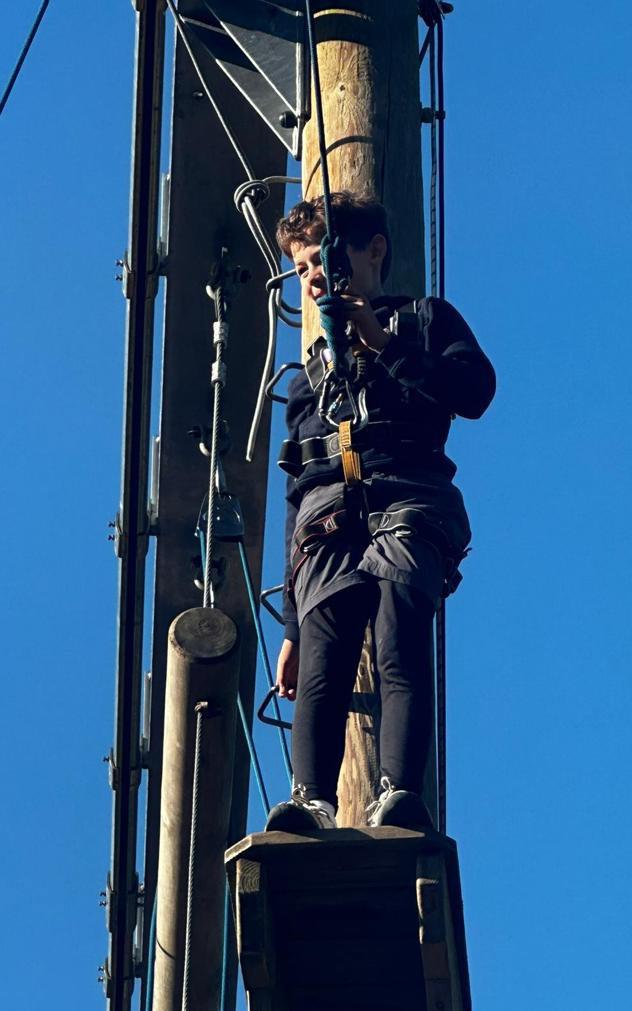
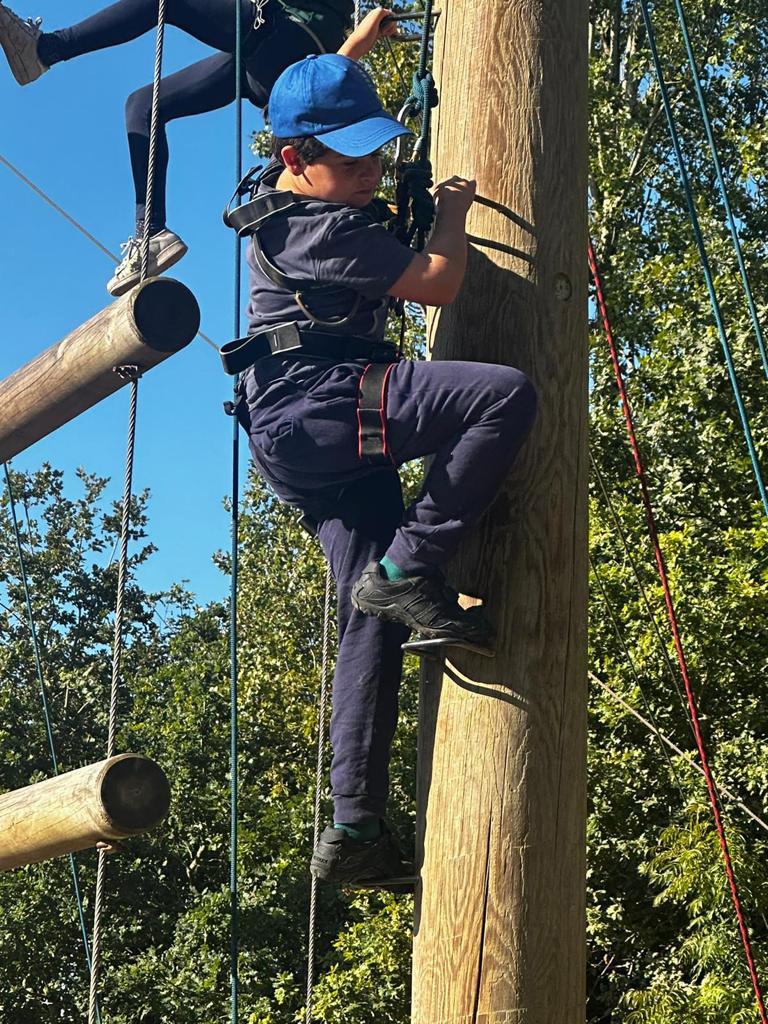

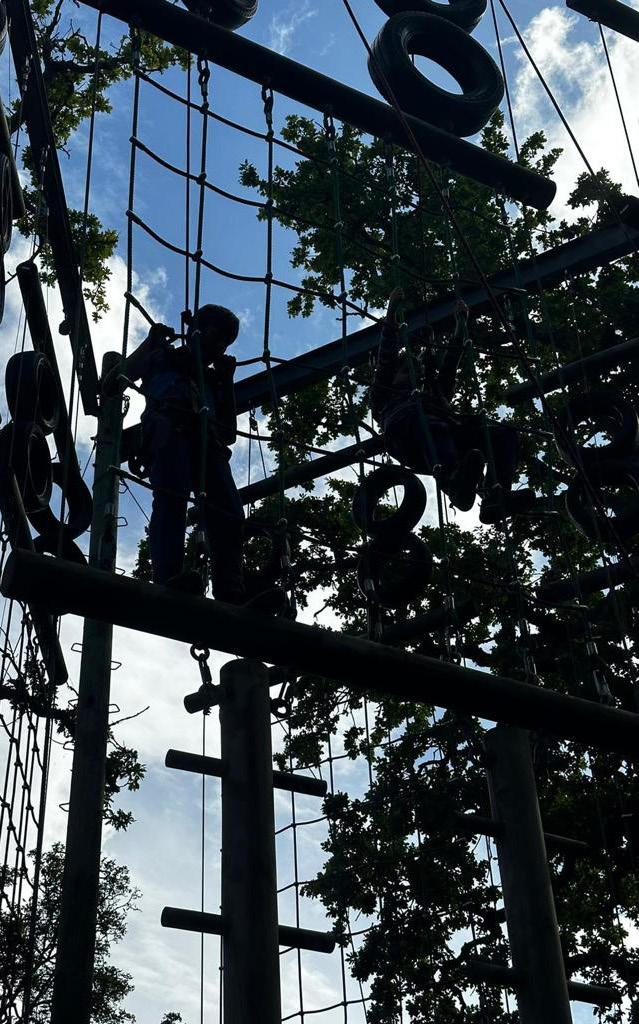
YEAR 9 RESIDENTIAL - Brenscombe
Felipe E and George M, Year 9 write...
On Wednesday 13th September, Year 9 embarked on a residential in Dorset. After a nice threehour drive down to the coast, we arrived at Brenscombe Outdoor Centre, near Poole, and had our phones taken away by our form tutors. We were then told our rooms and the house/barn where we were sleeping.
After we were shown our rooms, and made our beds for the following two nights, we proceeded to the main meeting point where we had our packed lunches. We were then told our groups by Miss Dodson.
Groups 1 to 4 started with abseiling, and our group began with climbing. The bus that was supposed to take us broke down, so we had a nice walk across the paddocks and then down to the climbing frames. There was a seesaw, that we first attempted, and then some climbing up a wall. After ompleting these activities, we set off for a nice walk back and played some football on the field. We had dinner in our groups. Our activities for that night were team-building activities. We then had hot chocolate and went to our rooms.
We woke the next morning to fog and cold. We had a nice cooked breakfast and set off for our morning activities - archery, air rifles and building a catapult. We then had lunch and ensured we had all the correct equipment before we went abseiling. (Groups 1 to 4 did water sports).
As we went abseiling, we passed though the local town, which was nice as we were basically living on a campsite. We then had a beautiful walk all the way down to the sea, where there was a lot of rocks. When we got there, we received a safety briefing by the lovely Alex and Kay.
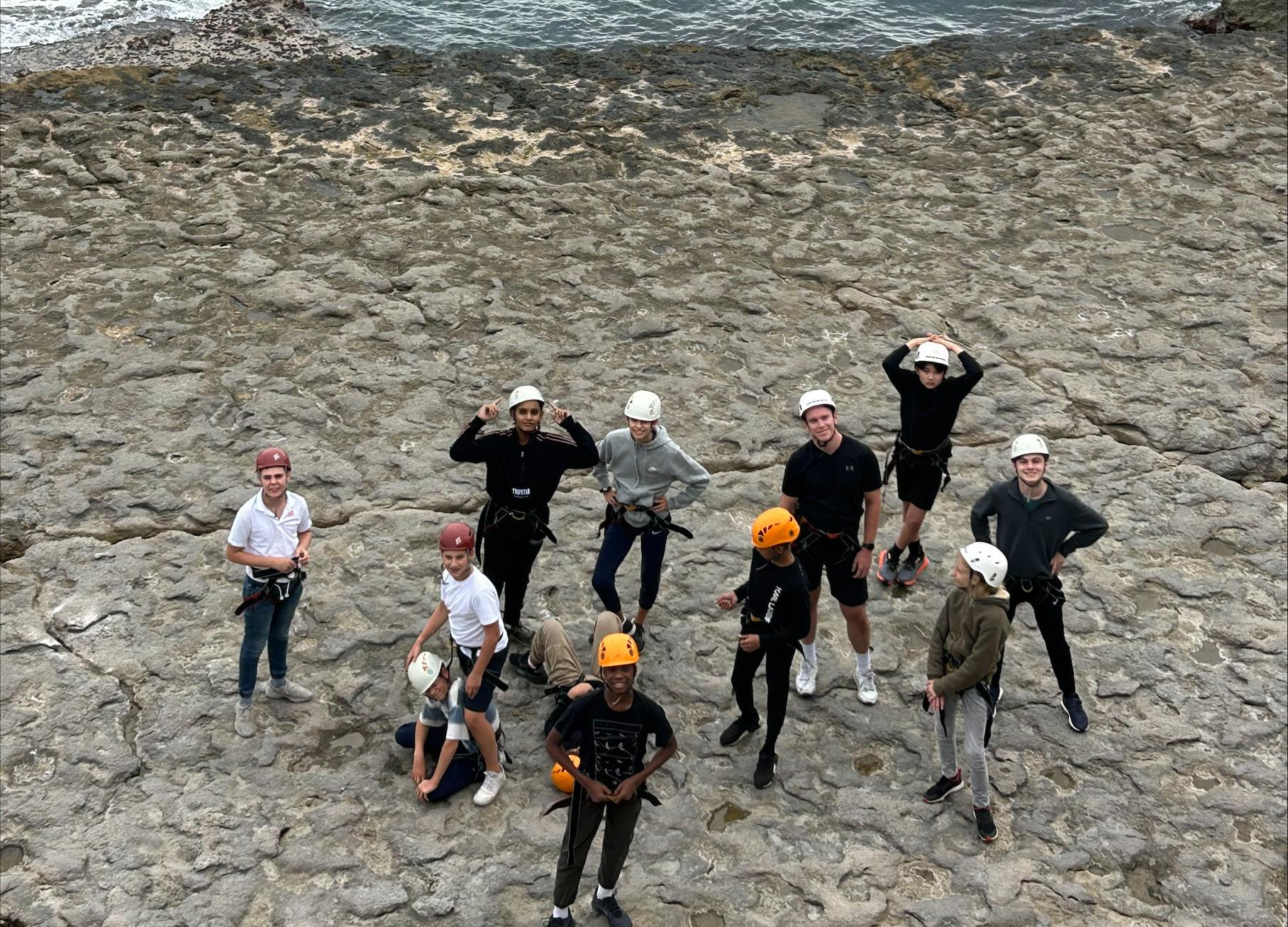
We all had an attempt at abseiling and most of us were able to do it! Even those of us who felt nervous should be proud as we all gave it a go! There was also a opportunity to do rock climbing. We then walked all the way back up the cliff and into town, so we could be picked up by the bus and driven back to our accommodation. The food that night was great and then we went out on a really nice night walk, where we saw Corfe Castle, and watched the sun going down, which was beautiful.
We woke up after the brilliant adventures of the day before. We were packed and ready to leave but also excited for what was to come, as we had a full morning of water sports left.
We had an earlier breakfast, made sure everything was out of our rooms, and then headed over to do some fantastic water sports. Pretty much as soon as we arrived, we put our bags somewhere dry and then pushed the canoes out on to the water.
We all came out of canoeing, wet and soggy. We made our way on to the coach, had our last meal of the trip, and then headed back to London.
All in all it was a wonderful residential, and one where we have many memories.
A huge and special thank you must also go to the Brenscombe staff, who made the trip really fun, and also to Miss Walters, Miss Dodson, Mr Garven, Miss Johnson, Mrs Neilson, Mr Malone and Mr Searle for putting up with us for three days in a row!
Harry
M, Year 9 writes...
This year, Year 9 went to Brenscombe Outdoor Centre, located near Poole. We enjoyed a lot of activities including rock climbing, canoeing, and going to their rope course. We also had the chance to go on a nighttime walk and other evening activities, which developed our teamwork skills.
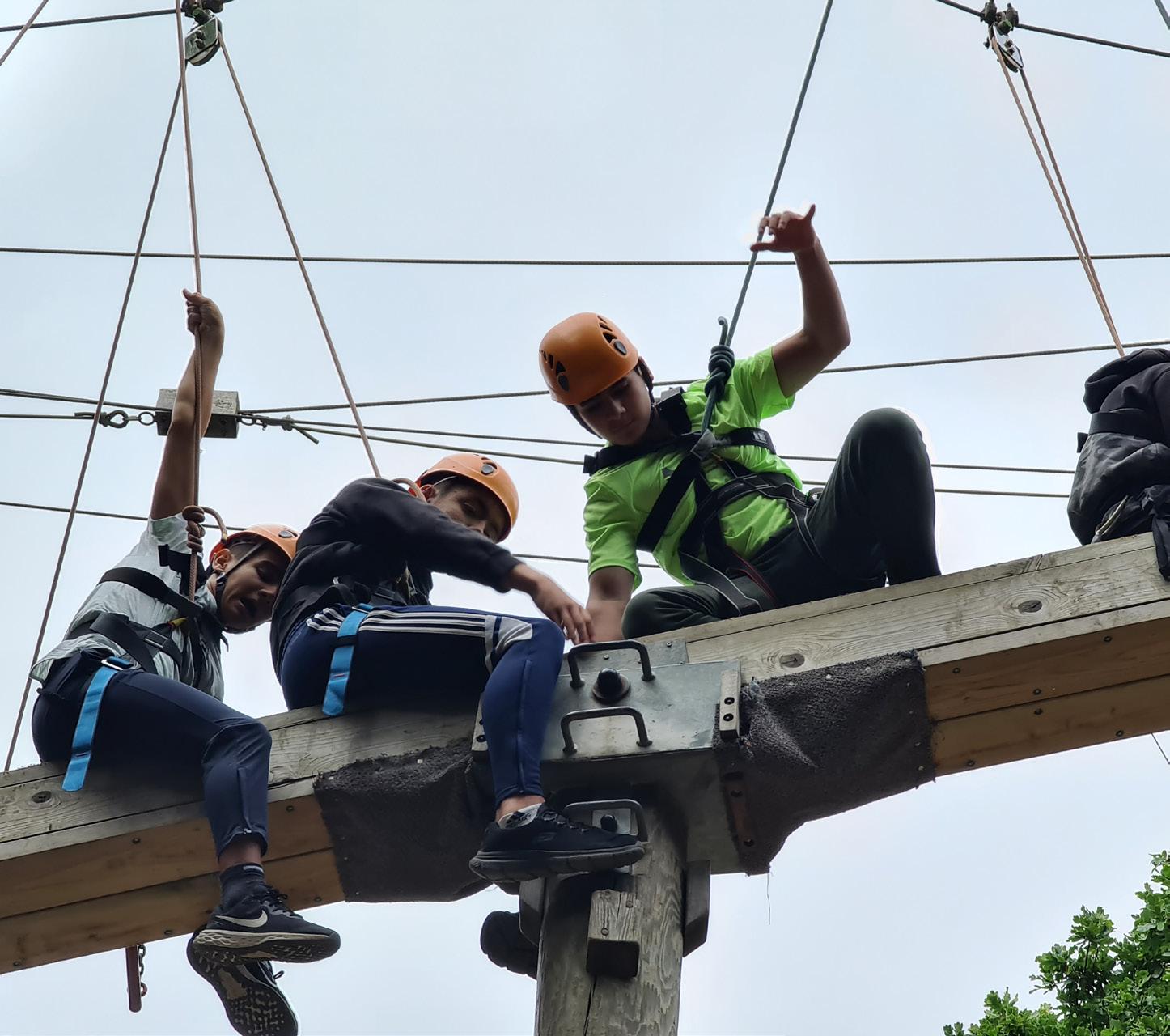
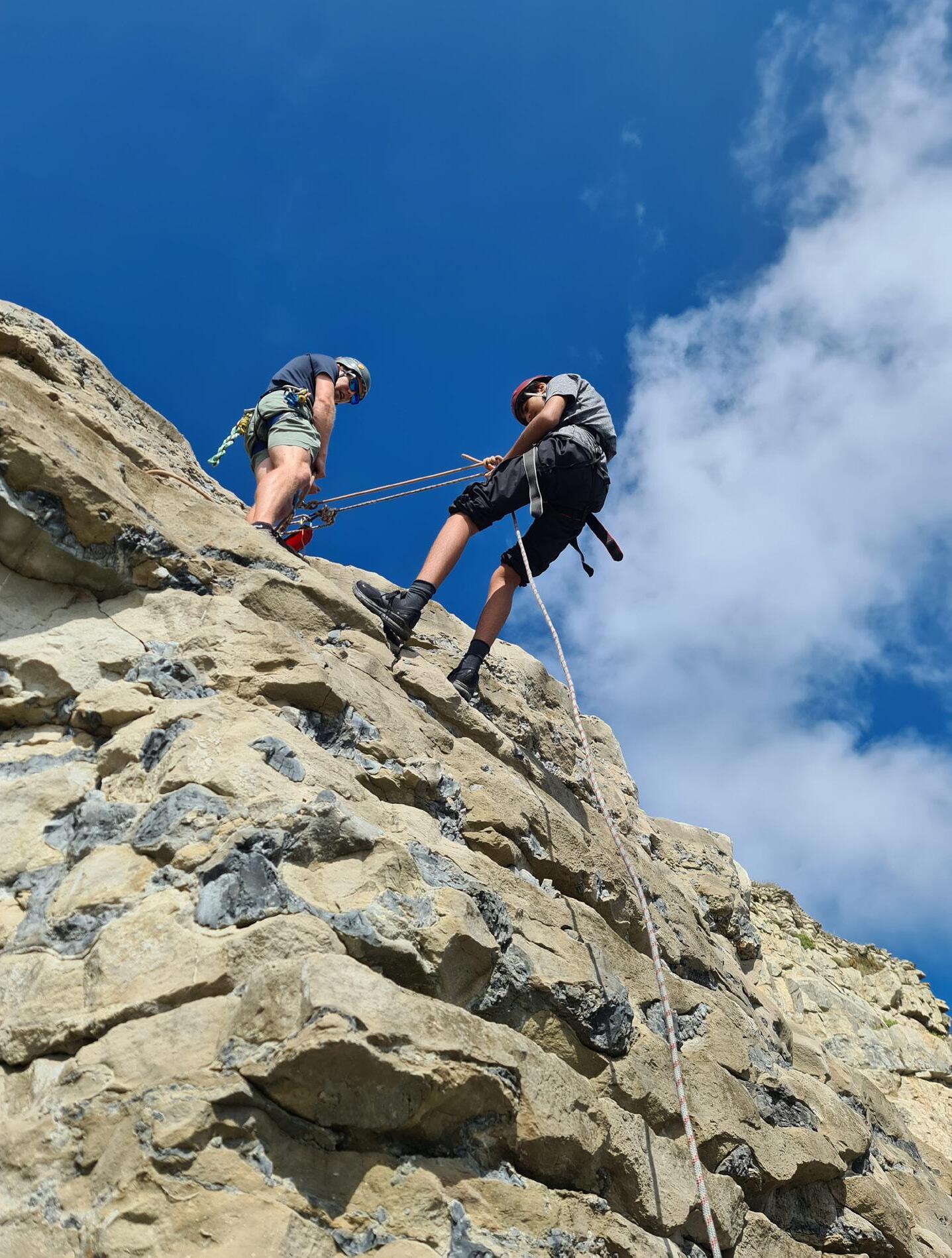
Over this trip, the old and new Wetherby Senior boys had time to talk and bond with each other. Many described the trip as ‘very fun.’

During canoeing, some teachers were very smug about throwing cups of water over their pupils if they did not paddle fast enough! Luckily, most groups were able to stay dry, except for the occasional splash from each boat.
The coach ride was very long but it was worth it for such a fun experience in Dorset!
My SUMMER INTERNSHIP
Coby L, Year 12 writes...
On 26th June, I embarked on an exciting journey to Copenhagen, Denmark, to complete a weeklong internship at a dynamic graphic design and marketing firm called Uncle Grey. Nestled within the heart of the city, their office was located in an elegant and historic building. Previously, the firm had worked with renowned brands such as Carlsberg, Burger King, and Canon.
The office was expansive and modern, and was filled with different departments including PR, design, editing and more. I spent the majority of my internship with the graphic design
department, where I had the privilege of shadowing one of the lead graphic designers.
My work began with the graphic designer providing me with a project brief, challenging me to develop a visual identity concept for the Danish clothing brand Bareen Sport. This task commenced with the creation of mood boards which drew inspiration from various themes. After careful consideration, we narrowed down the selection to two mood boards, which acted as my guide.
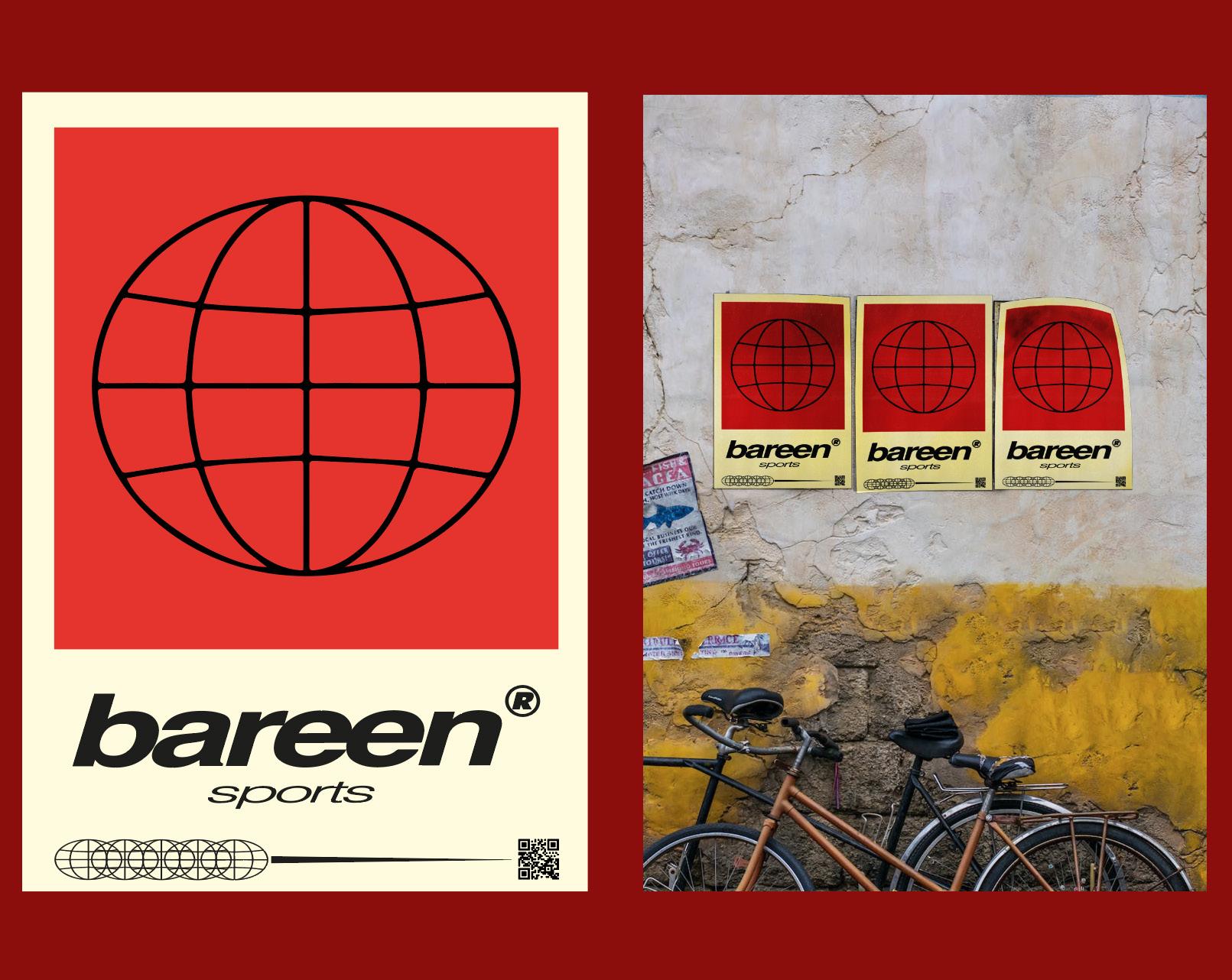
My next task was to breathe life into the brand through logo design using Adobe
Illustrator. Following extensive brainstorming, I created several logo concepts. From there, two were selected for further development. Once the logos reached their final form, I compiled a branding presentation that included variations of the logos, posters, mock-ups, and labels. The culmination of my efforts was a presentation to the graphic design team on my last day.
Throughout my internship, I gained invaluable insights into the intricacies of branding development and the day-today operations of a large firm. Thanks to the mentorship of the graphic designers, I witnessed a
substantial improvement in my graphic design skills, particularly in Illustrator, Photoshop, and InDesign. While I primarily collaborated with the graphic design team, I had the opportunity to converse with employees from various departments, enriching my knowledge about marketing and 3-D modelling.

Uncle Grey’s work environment was both inviting and supportive. My internship experience was truly enlightening, and I found myself intrigued by the possibilities of a career in graphic design. This glimpse into the world of design has opened new avenues for my future, and I’m now considering it as a potential path.
Overall, my internship at Uncle Grey was an enriching experience, offering me practical skills, valuable insights, and a fresh perspective on my future career possibilities. I would recommend that everyone look into work experience as it is great for considering future paths.

My summer at wanakita
news, such as sport, the upcoming weather and a ridiculous reading of Green Eggs and Ham. After these announcements, the camp rushes into the massive dining complex, where a variety of hot meals are served. This is where kids wolf down entire boxes of fruit loops and breakfast Danishes.
Sebastian A, Year 13 writes...
A clanging bell cracks through the freezing morning air, ringing across the camp. Its echo signals the start of a new day. Campers and counsellors of all ages leap from their bunk beds, throw their swim suits on and run to the main beaches to be the first cabin for the morning polar bear dip. All at camp starts their morning by dunking in the chilling water.
Deep in the Canadian woods, at a summer camp called YMCA Wanakita, this is how almost every single of my days started this summer. I was far north of Toronto, where civilization slips
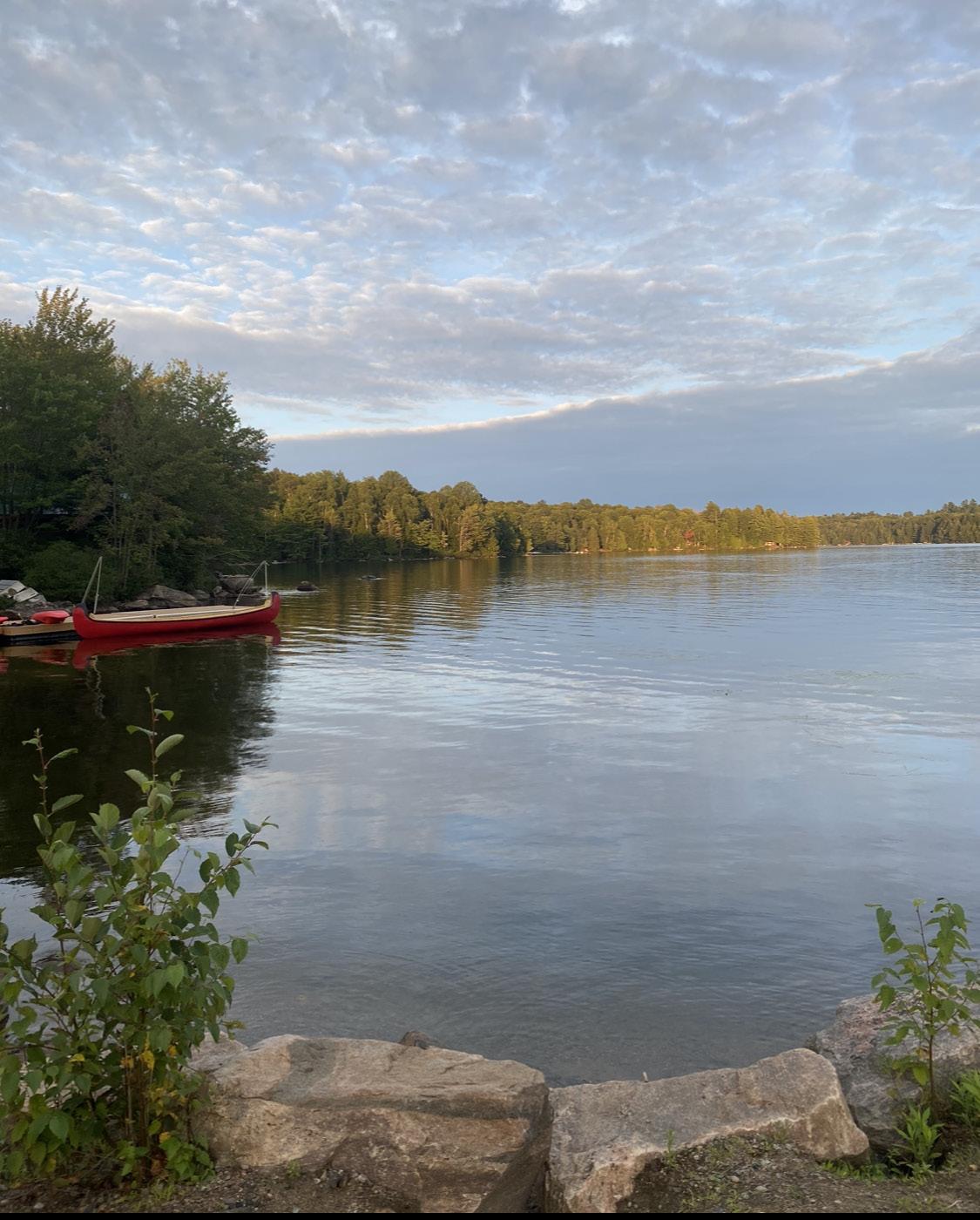
away and leaves only stunning views of glass still lakes, thick forests, and clear blue skies.
After the quick burst of energy from the morning dip, the camp quickly retreats to their cabins to escape the gripping cold that clings onto them, leaving the camp silent again. Most will get ready for the coming day and morning announcements, while a lucky counsellor will utilise this rare opportunity to get a few minutes rest or take a steaming shower.
In a place cut off from the outside world, the morning announcements are a way for counsellors to share “important”
Post breakfast, full bellied campers head back to their cabins once again, to prepare for a day’s worth of activities. The average day consists of hours upon hours of energy and excitement. Activities range from inland archery and various forms of rock climbing to the waterfront activities like canoeing, kayaking, sailing and so much more. In the afternoon, cabins move as a squad, following intricate and unique schedules carefully formatted and decorated by their counsellors. While these afternoon slots can be the standard activities, counsellors utilise their creative sides and have the freedom to do whatever they please. Personally, some of my favourite slots were pirates (stealing each other’s sail boats), larping (a massive stick fight) and trip try-outs (a race to an island in the middle of the lake).
Accompanied by an almost infinite range of things to on the 9000 acres of camp forest and lake, there are also wonderous camping trips carried out by counsellors. The trip I went on last year was one of the best experiences I have ever had in my life. Still a camper, I embarked on a ten-day trip through Canada’s Temagami Provincial Park. During this time, I was even more isolated from the outside world. These trips build skills of endurance and teamwork
as the group collectively carries all the necessary cargo. For my trip, this included five large canoes and a vast array of different packs, including tent bags and large waterproof barrels full of food.
From a bird’s eye view, the provincial park is predominantly a pattern of gleaming blue lakes, separated by thick forests. In order to move between lakes and continue the canoeing journey, you must carry your equipment along a beaten trail cut through the thicket and dense foliage. I must admit, these parts of the trips are intense and require high levels of resilience but, at the end, the breathtaking views and gentle breeze gliding across the lake create an acute sense of relaxation and contentment, making the strenuous trails worth it.
Wanakita has endless opportunities and experiences to offer. Campers acquire outdoor wilderness skills that will stick with them forever, accompanied by the tight bonds of friendship that are formed during the course of their stay. Persistent campers have the chance to join the student counsellor course in their last two years of being a camper. These programs allow campers to obtain the correct qualifications to become a counsellor at the camp,
but also tailor their soft skills. It builds skills such as leadership, creativity and even patience.
Finally, as a counsellor, you are reunited with old friends and work on a team together, for a whole summer, with plenty of free time. While on the job, skills from the student counsellor program are refined and developed further, but with the freedom of working at the camp, you have access to all the facilities. This is a great way to learn new skills and sports that are
difficult or impossible to learn in an urban environment.
Overall, my time spent this summer was an incredible experience that I feel all young people should partake in. Although the facilities were wonderful and the location stunning, it is the people I met this summer that made it a truly unique and meaningful experience that will stay with me forever.
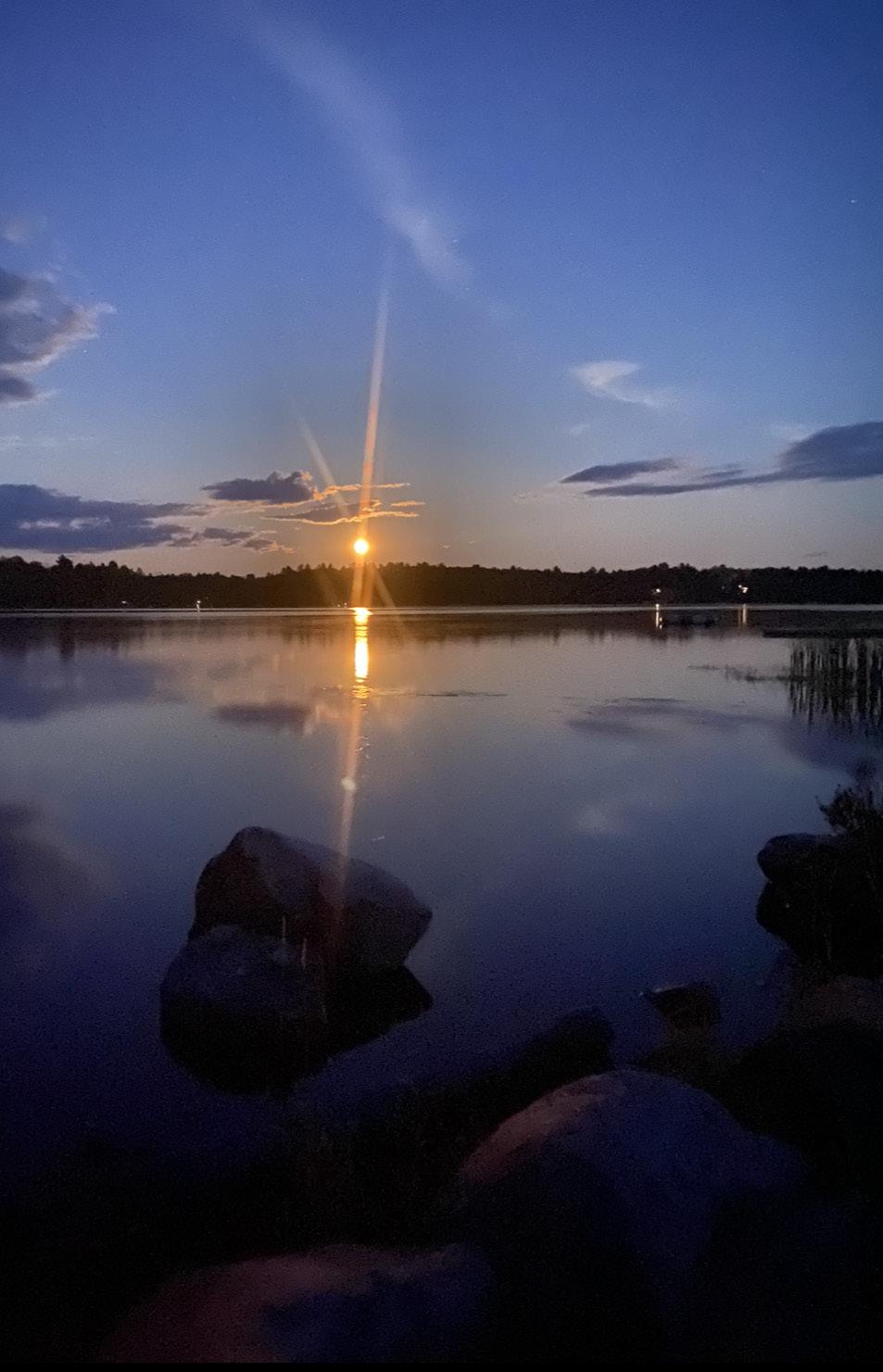
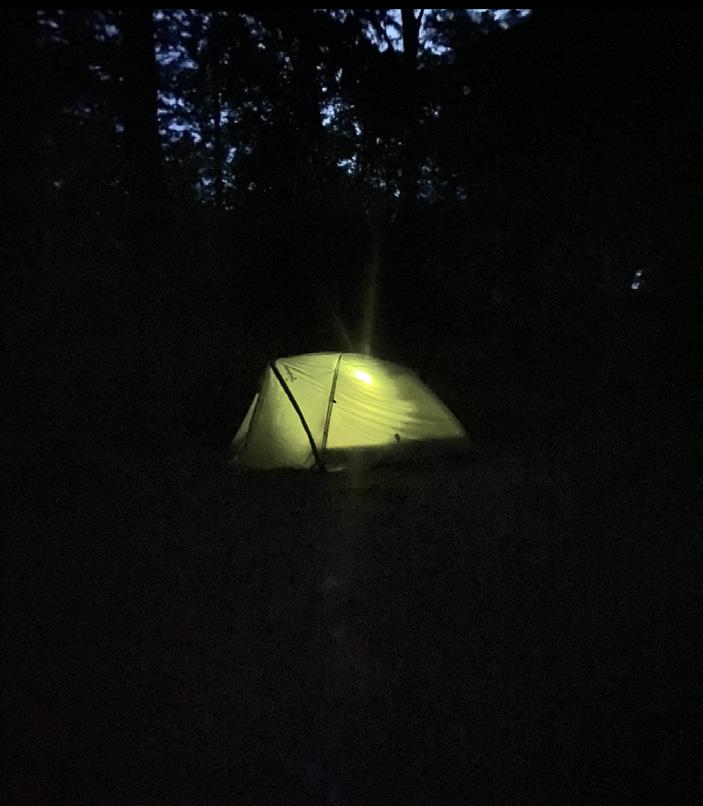
WORK EXPERIENCE AT ATKINS GLOBAL
Luke T, Year 11 writes…
In late August, I had the opportunity to do a work-study with Atkins Global for a few days in central London. Atkins is a Canadian-British multinational engineering, project management, and consulting services company.
During the three days I spent there, I was able to meet with people working on various engineering projects, including the resignalling of the Queens Boulevard Line in New York and the construction of the East-West rail that connects East Anglia with western England. I found the signaling projects particularly
interesting due to the complexity and the safety risks that come with them.
The highlight of the experience, however, was when I was able to spend a day at Stratford Market Depot, on the eastern end of the Jubilee Line. This is where the Jubilee Line’s 1996 stock trains are maintained. During that day, I learned about the challenges of maintaining the fleet and moving trains in and out of service throughout the day.
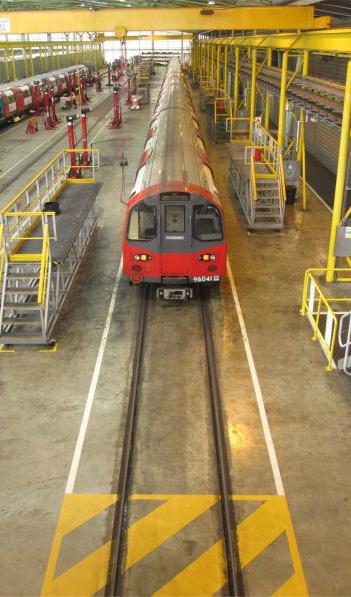
Overall, it was a really enjoyable experience and a nice complement to my studies at Wetherby Senior.
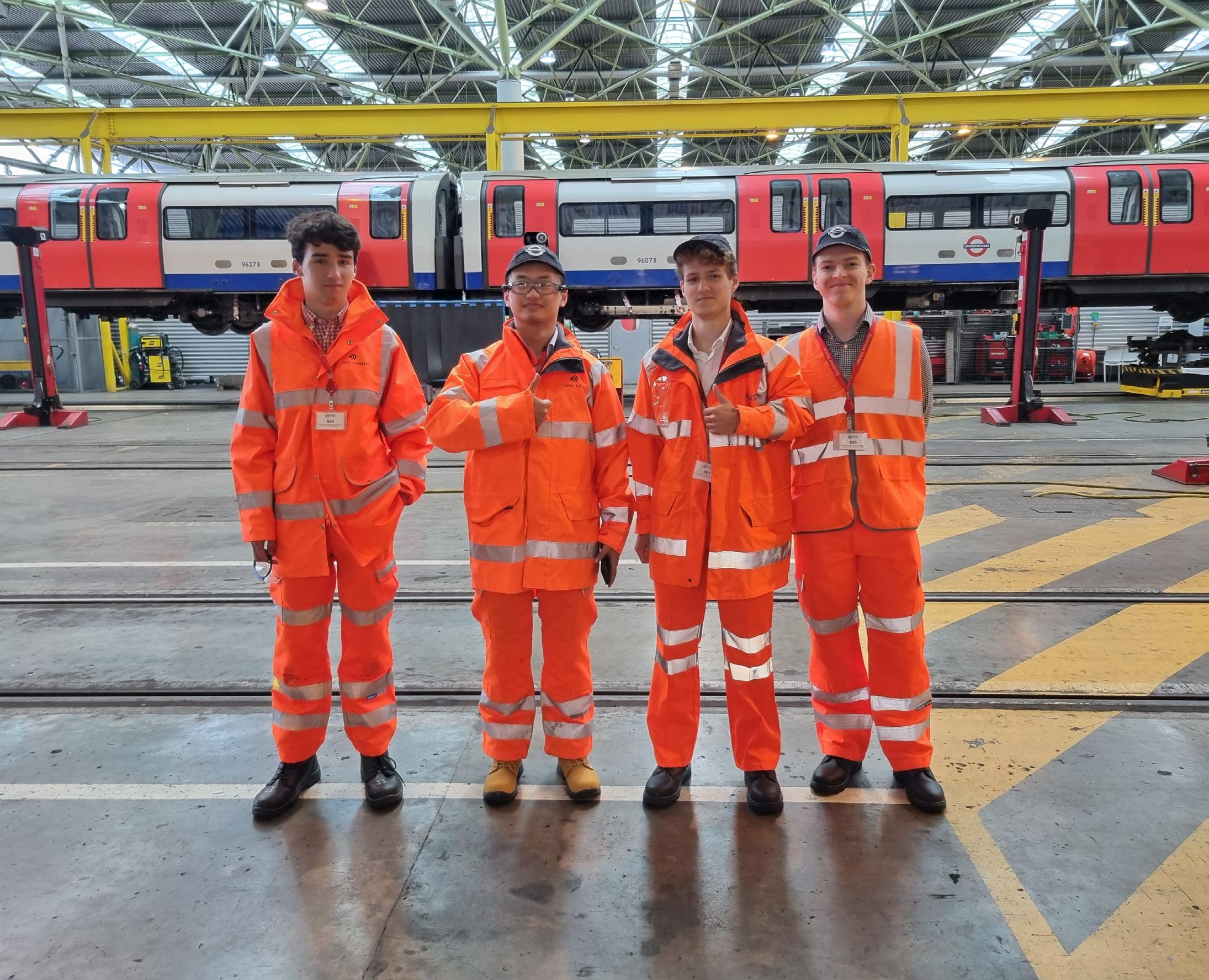
Casper S, Year 13 writes...
Our visit to the Rossetti exhibition at the Tate, on 12th September, was an extraordinary experience that touched on various aspects of art, history, and society. It was a journey through the world of the Rossetti family’s art and a platform for engaging discussions.
The heart of the exhibition lay in the captivating works of the Rossetti family. Right from the beginning, these artworks drew us in and led to animated conversations. Kwame and I were particularly enthusiastic, eagerly seeking to unravel the hidden meanings and symbolism within each piece. Pranav showed admirable curiosity and participated actively in our discussions. His willingness to engage with the art and its ideas was commendable, making our conversations even more enriching.
One of the exhibition’s most intriguing aspects was its portrayal of Victorian women. The Rossetti family’s perspective on women, in a society marked by rigid expectations and limitations, left a deep impression on us, especially
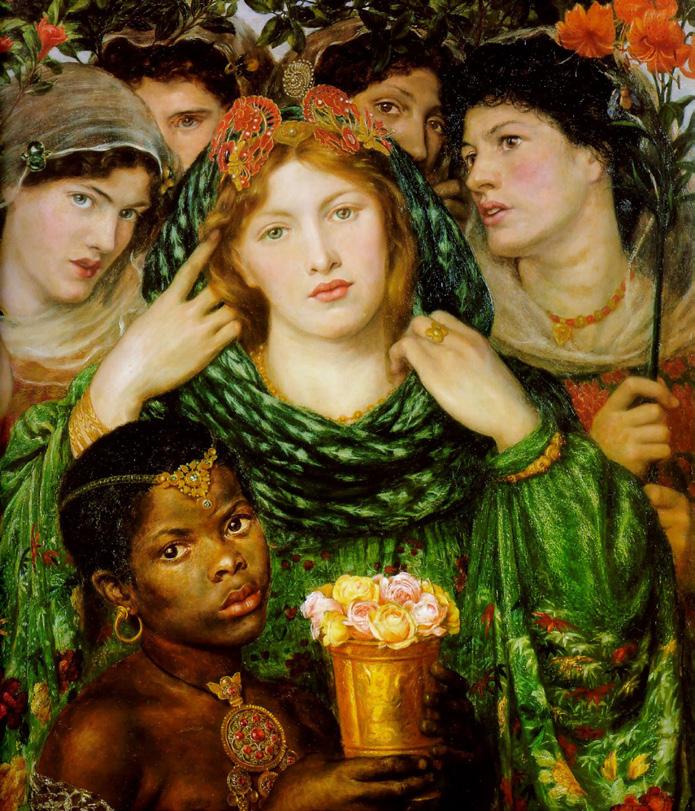

‘THE ROSSETTIs’ AT TATE BRITAIN
Pranav. It prompted us to reflect on the evolving roles and struggles of women throughout history. We realised that the art we were witnessing wasn’t just about aesthetics but also a window into the social realities of the time. Another captivating theme explored was the concept of love within Victorian society. We were taken aback by how love, once centred around romance and intimacy, had evolved during that era to encompass ulterior motives, like pursuit of wealth and power. This revelation provided valuable insights into the complex dynamics that characterised Victorian relationships. It forced us to ponder the ever-changing nature of human emotions and the influence of societal norms.
What truly set this exhibition apart was its ingenious use of technology. Visitors had the unique opportunity to stand in front of a poem and, magically, the voice of the poet would bring the words to life. This immersive experience allowed us to connect with the creators on a profound level, as if we were having a personal conversation with them across time. It added an unparalleled authenticity to the experience, making it feel like a journey through history itself.
Furthermore, the way the exhibition logically integrated visual and literary elements was remarkable. The artwork served as powerful companions to the literary works, deepening our understanding of the social, cultural, and artistic nuances of the Victorian era. It was as if the paintings and poems were speaking to each other, creating a
holistic experience that appealed to our senses and intellect alike.
In conclusion, our visit to the Rossetti exhibition was not merely a trip to an art gallery but a transformative experience that opened our eyes to the world of the Rossetti family, their contributions to art and literature, and the historical context in which they lived. It sparked discussions about the portrayal of women, the evolution of love, and the power of art to transcend time and space. The innovative use of technology, and the logical blending of visual and literary components, made this visit an unforgettable and enlightening journey through history and art, reinforcing our belief in the enduring impact of artistic expression.
THE LONDON UNDERGROUND: PAST, PRESENT & FUTURE
The least used station is Roding Valley on the Central Line.
The busiest tube station in 2023 is Kings Cross St. Pancras.
The longest line in track length is the Central line with 38 miles of track.
The London Tramlink used to be known as the Croydon Tramlink, as it was originally not part of TFL.
The only TFL trains with forwardfacing and backward-facing seats are on the Bakerloo, Metropolitan and Elizabeth lines.
Alexander M, Year 7 writes...
The London Underground (or the Tube) is one of the most iconic parts of London itself. It may be a regular part of many of your lives too! This article will cover the past, present and possible future of the iconic Tube network.

Past
The Tube network started off with just one line – the Metropolitan. This line opened in 1863 (making the tube network 160 years old!). It spanned seven stations from Paddington (Bishops Road) to Farringdon Street. The railway was so packed at the first station that nobody could get on at any of the others! Later, in 1868, the Metropolitan Railways rival company, the District Railway (now the District line), made a new railway spanning South Kensington to Westminster. Both companies kept expanding their railways until 1890, when a new railway came to town. It was called the City and South London Railway, and it connected King William Street with Stockwell. It is now part of the Northern Line.
Present
Here are some fun facts about the modern-day Tube network!
The longest tunnel in the system is 17 miles from East Finchley station all the way to Morden on the Northern line.
There are 274 stations.
The newest station on the network is Barking Riverside on the London Overground. It opened on the 18th July 2022.
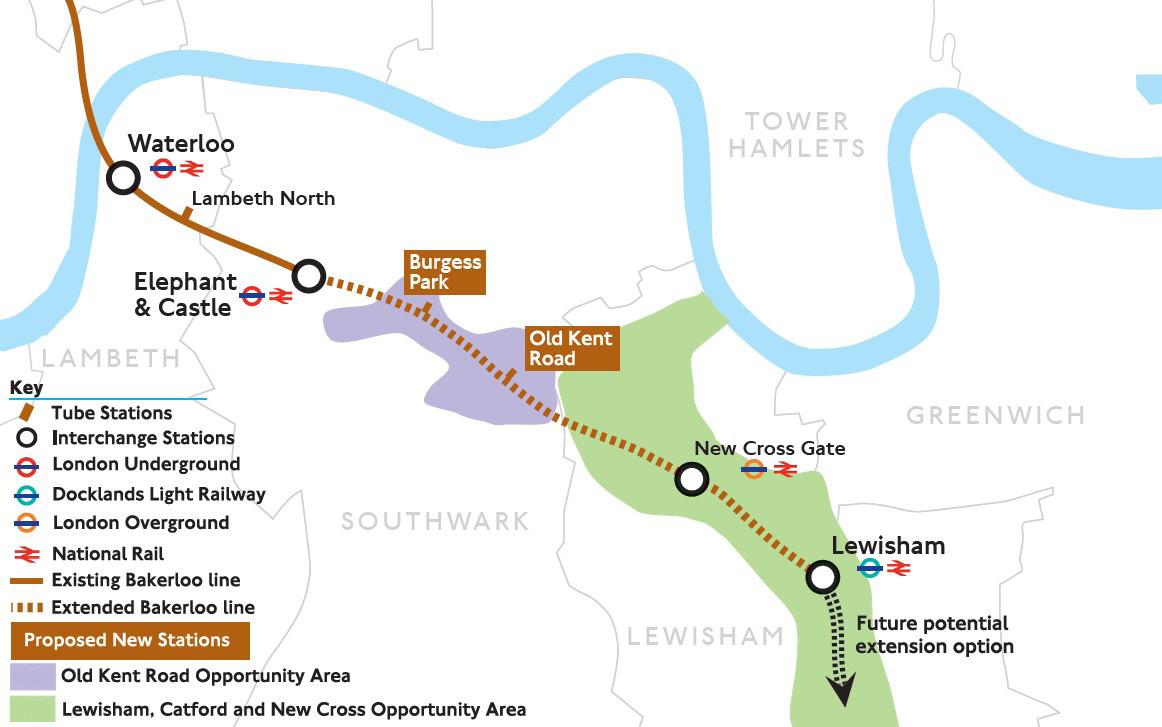
Baker Street’s Circle and Hammersmith & City line platforms have been the same for over 160 years!
The DLR and the Victoria line both have self-driving trains – the Victoria line trains still need a driver to make sure the system is running smoothly.
The oldest Tube trains still being used are on the Bakerloo line.
Finally, the Metropolitan line trains may seem similar to the Circle, Hammersmith & City and District line trains, but the Metropolitan line uses S8 stock whilst the others use S7. The difference between the two is that the S8 trains have forward-facing and backward-facing seats, and have an extra carriage.
Future
Lastly, the final topic we will be going over is the future of the Underground. These will be real planned extensions, as well as my own opinion.
The Bakerloo Line Extension
You may have heard of this one. A south extension of the Bakerloo, this extension comes in two phases. The first, going south from
Elephant & Castle, consists of Old Kent Road, Burgess Park, New Cross Gate and Lewisham. This adds some good National Rail connections on the Bakerloo line.
The second phase, running south from Lewisham, calls at Ladywell, Catford Bridge, Lower Sydenham and New Beckenham. After that, a smaller branch goes off to the east for Beckenham Junction, a connection with the London Tramlink. The line continues from New Beckenham to Clock House, Elmers End, Eden Park, West
Wickham and Hayes. This section from New Beckenham takes over a section of the Southeastern.
The Northern Line Extension: Part Two
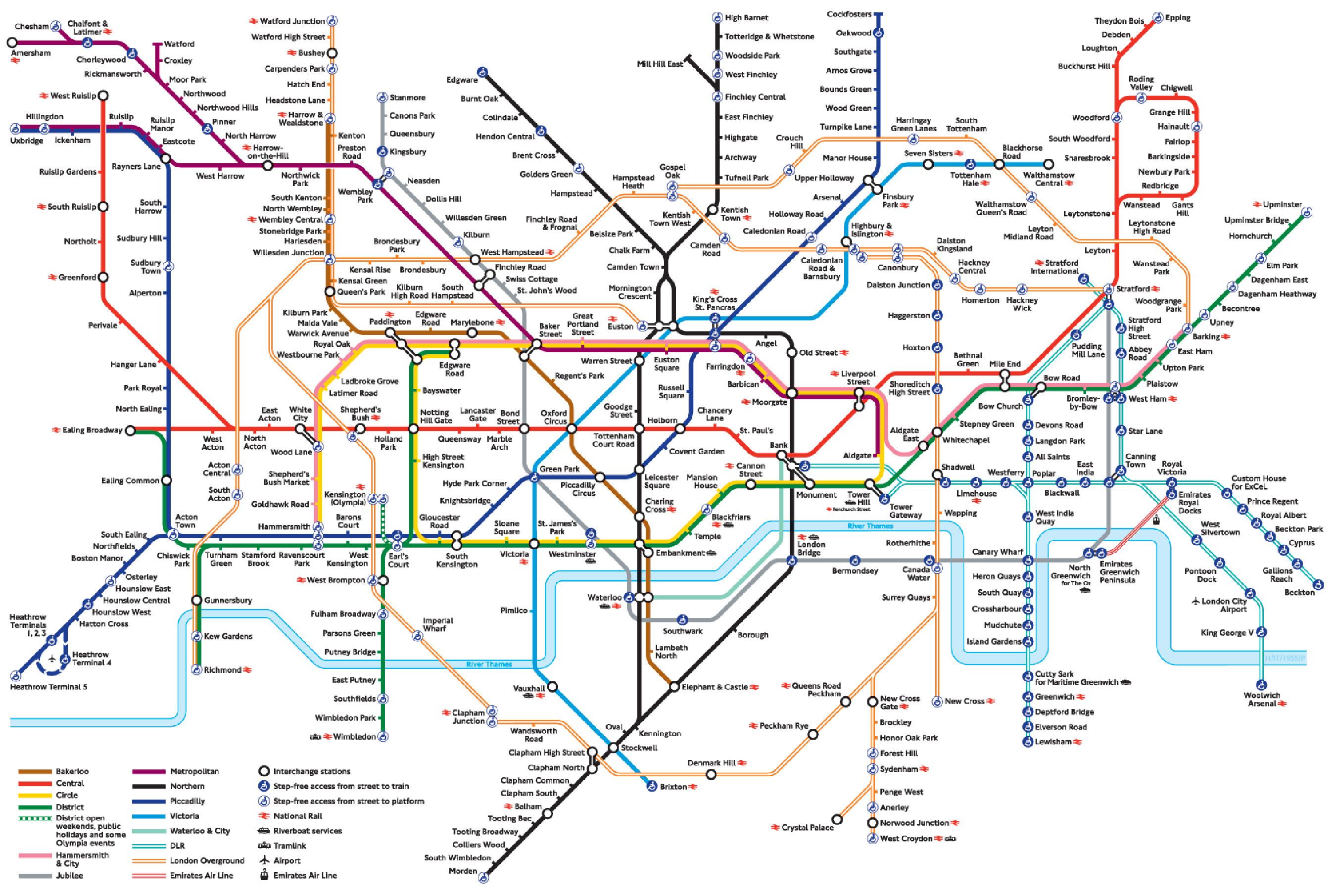

Some of you may have heard of the Northern line extension, a small section of track running through Nine Elms to Battersea Power Station (station). But did you know that this is planned to extend to Clapham Junction? The line will extend only one station from Battersea Power Station and
provide a good south-eastern link from central London, as well as a London Overground link.
The Castelnau Extension
This is one of my ideas for an extension and I think it is rather good. It is to extend the Circle and Hammersmith and City lines from Hammersmith one station down to Castelnau, south of the river. Neither of these lines go south of the river, so it would be a good connection.
Heathrow for Overground
My final idea is a London Overground extention from Richmond to Heathrow Airport.
Calling at Hounslow and Heathrow Terminal 4, this extension would be fantastic as the London Overground covers most of London, so an airport connection would be great.
GOODBYE HEGARTY, HELLO SPARX
Omar J and Zehen S, Year 10 write...
In 2023, HegartyMaths, the UK’s best maths website, was shut down by Mr Hegartymaths because of the site’s servers overloading from overuse during COVID-19.
It has now been announced that the site will officially close in 2024. In 2019, Mr Hegarty sold the website to SPARX as a creation he could no longer take care of.
What was HegartyMaths?
HegartyMaths was created by co-founders and teachers Colin Hegarty and Brian Arnold.

In 2011, the pair started to make maths videos on YouTube to support their own classes with maths homework and revision. Since the videos were freely available on YouTube, students from all over the country and the world started using the videos too.
In 2012, Colin won £15,000 of funding from education charity SHINE, through its “Let Teachers SHINE competition”, to make a website to host the videos and make more content.
The original website, launched on 12th July 2013, was called mathswebsite.com. It was built to contain free maths videos to assist students in revision and largely achieved its goals.

At the end of the 2022-23 academic year, Wetherby Senior stopped using the site.
Giorgio L, from Year 10, said the death of his beloved maths website was a “moment of great sadness” for him and his friends. He said that its loss would be “deeply felt” around the world.
He added that he would be “comforted and sustained by knowledge of the respect and deep affection in which the website was so widely held”.
SPARX Maths will replace its HegartyMaths.
What is SPARX Maths?
SPARX Maths is an adaptive maths website that has been constructed for the purpose of aiding people to learn maths.
It has many benefits for young students to tackle difficulties with the subject and get used to showing their working by doing “bookwork checks”. These bookwork checks make students write down their working in order to recall the answer later in the task.
There has been some resistance against the introduction of this new website, but students must remember that this website is still in its early stages and does not have as many users as HegartyMaths.
HegartyMaths, you will be missed…
THE TOP 5 COFFEE SHOPS IN MARYLEBONE
Ivan G, Year 13 writes...
5. Pret
An oat flatwhite costs £3.50.
It’s a convenience. You can pay £25 a month and get five strong iced Americanos (“barista-made drinks”) a day. The sandwiches are great - very good tuna and their smoked salmon is not bad.
It’s a convenience; not interesting, not cheap. Why do people go here? Are you really buying more than two coffees a day? Should you be?
4. Hagen
An oat flatwhite costs £3.50.
When I told Oscar F, in Year 13 that that I was writing an article about coffee shops near our School, he told me about Hagen and said that it’s a nice place with good coffee. So, I went in.
I drank my coffee and it was good. I can’t say better than Daylesford,
Ottolenghi and Monocle, but I think I’ll go to Monocle or Ottolenghi next time.

3. Daylesford Organic
An oat flatwhite costs £4.00.
Daylesford is very sibilant; they have good seats and good salads (their Orchard Salad consists of a lot of kale and some other healthy stuff), with seats outside in a row parallel to our favourite Blandford Street pavement.
2. Ottolenghi
An oat flatwhite costs £3.70. There’s only one building Ottolenghi could move to that would make it closer to Bulstrode’s red doors. The coffee is good, made much better by the wonderful white cups they give it to you in since they are decorated with charming red illustrations and don’t become horrible when you drink from them. The food is also superb as there are interesting salads, potatoes, chicken, cakes and cookies without flour.
There is a huge wooden table which looks marvellous but is a huge inconvenience when your next lesson is in the Bulstrode building, you have ten minutes left of break, and you want to drink your coffee sitting down. If Ottolenghi had better seats, it wouldn’t be number two.
An oat flatwhite costs £3.50.
Monocle is great.
The menu is good and has great variety (what is an espresso tonic?). The wooden interior lends it sense of comfort, they have a room with two grey sofas (they could definitely share one with Ottolenghi), and they serve delightful black cups of terrific coffee that you can enjoy while feasting your eyes on the trampled sidewalks and urban beauty of Chiltern Street, which is parallel and neighbouring to Hannah House’s Manchester Street.
1. The Monocle Café
ARJUN’s SCIENCE UPDATE: PLACOZOANS UNLOCK SECRETS OF OUR EARLY NERVOUS SYSTEM
Arjun D, Year 13 writes...
The small world of placozoans
They are millimetres long, coinshaped, three-celled thick, flat animals which have wandered the oceans for millions of years eating algae and moving around with tiny hairs (cilia).
Their DNA is the shortest measured for any animal and studies of placozoans placed on the evolution tree (phylogenetic position) imply placozoans are an ancestor to cnidarians (jellyfish, anemone etc).
Placozoans do not have nerve cells (neurons) like humans, instead they have peptidergicactivated by neurotransmitters which are amino acids that make up a protein - cells which release amino acids (substance that makes up a protein) which stimulates nearby cells. As these animals have been alive for so long, studying them can provide insights into our ancient ancestor’s nervous signalling, which then evolved into our complex electrical nervous system.
Overview of nervous signalling in humans
When two nerve cells or neurons meet together but do not touch the gap between the cells, this is called the synapse. To send messages electrochemical signalling is used as chemicals called neurotransmitters diffuse across the synapse and bind to specific receptors activating that cell. Where the
neurotransmitters come from is the presynaptic membrane and they arrive at the postsynaptic membrane. Peptidergic cells are cells that are activated by these neurotransmitters (chemicals).

Discoveries
Fourteen different types of peptidergic cells - activated by neurotransmitters which are amino acids that make up a protein - were found in all placozoa species. These cells share a set of genes where a specific protein binds to (gene module).
65,000 placozoans, of 4 different species, were sampled and 1,759 unique molecular identifiers were discovered. They also have 9 distinct cell types in similar numbers across the species.
Using a set of 7,389 genes, a general transcriptome (total number of mRNA molecules released by cell) collection of these genes showed similarities between the four species.
Peptidergic cells expressed the most known genes conforming to the place where neurotransmitters are released (pre-synaptic scaffold - which then activates other cells) in cnidaria and bilateria nerve cells.
30 receptor-peptide (protein) pairs combined with the expression pattern of the cells which released peptide (protein) and the expression of receptors in other cells. This diversity of peptidergic cell types and Neurophysin peptide - needed for neurotransmitter hormone development - implies highly
complex chemical signalling in placozoans.
Upon examination of gene expression, which is how much of a gene is used to code for RNA, which then gets made into proteins. The Transcription Factor - a protein which controls rate of gene expression, which is how much of a gene is used to create which protein - usage was the most similar feature across cell types. The evolutionary similarity of this characteristic in placozoans is similar to this characteristic in mammals.
Peptidergic (cells activated by neurotransmitters which are amino acids that form proteins) cells express large numbers of G-Protein Coupled Receptors (proteins in cell membrane) and they have different combinations of post-translationally (after amino acids are made) modified NeuroPhysin (protein that carries a chemical of nervous system), and NeuroPhysin - processing enzymes. However, they do not have post-synaptic membrane like mammals.
These discoveries proved the chemical brain hypothesis theory (the early nervous systems started
as chemical messaging between cells) to be correct.
How does this study advance our knowledge?
Upon discovery, 4%–14% of the fully specialised cells in placozoans had genes involved with cell division (not peptidergic cells). The idea of differentiation (specialisation) in placozoans gives further evidence that
in animals such as sponges plastic cell fates (where cells are unspecialised - stem cellsthat then specialise) may have been common in early animal evolution.

Placozoa may be the oldest living organism with a peptidergic system noticeably similar to our nervous system - following discovery that peptidergic system is not electrical, so is not the same as nerve cells (neurons).
Mysteries awaiting discovery
How are ctenophore (comb jellies) nerve cells explained in this context, as they lack the gene arrangement of placozoans?
What is the exact place of placozoans in the evolution tree (i.e. how similar is it to cnidarians and ctenophores)?
What percentage or proportion of peptidergic cells are sensory in placozoans?

US POLITICS REVIEW
Felipe E, Year 9 writes...
By the time this is published, we will be nearly a year away from the US general election. I am very nervous about this election because it could easily get very messy. US politics at the moment is very polarized and many Republicans still believe Trump was the rightful winner in the 2020 presidential election. This could very easily to another 6th January moment and, if this were to happen, it could be the end of America as a free and democratic country.
In 2022, swing states held elections for the secretary of state’s offices, and mostly Democratic candidates won meaning that, whether you’re a Democratic or a Republican, you still have a fair chance of winning.

One thing that is not always top of the British news agenda is state legislatures. These are important as they can technically overrule a candidate’s victory in their state. Democrats didn’t have a bad night in 2022, so this side of the election isn’t too worrying. Democrats though will have to be on their A game as the leader of the party is on a 53.4% disapproval rating.
One issue that the Democrats also have is voter turnout, many Democrats would prefer a younger candidate - Biden would be 86 at the end of his second and final term. Voters who would normally support the Democratic party may decide not to vote at all to show their frustration. Democrats tend to only do well in the very high turnout elections and this very high turnout has to be in
specific areas of the country, and amongst typical democratic supporting demographics. Failure to have very high turnout in these areas could either mean a Trump presidency, where he changes the country for the worse, or a Joe Biden presidency, where democracy is upheld. The sentiment about age is spread across the ticket though - Donald Trump is old as well.
My personal prediction is that the election will to be too close to call for maybe even a week. Unless Trump wins, his campaign will push the idea that his election was rigged against him. His campaign will push for recounts in every single state that he doesn’t win. He is allowed to do this and he is also allowed to challenge results in court with evidence.
So far, there has been no evidence to suggest that Trump’s claims of rigged elections are true. Most challenges in court have been
thrown out as Trump’s legal teams has had no evidence. If Trump were to ever find evidence of such claims, then maybe he would be taken more seriously by the American public.
If Biden were to win, I think Kamala Harris would be a frontrunner for the 2028 election, should she choose to run. I do rate Kamala Harris, she has been given a hard time by the media but she is shining through the spotlight with speeches in red states decrying book bans etc.
There are elections this year and most of these are not very significant but it will be interesting is to see how Democrats are doing nationally. There are elections for Democratic governors in typical red states such as Kentucky and Louisiana. Andy Beasher is running in KY and the Democrat in Louisiana is term-limited, so it will be interesting seeing the margins.
SAUDI ARABIA’S NEW MEGAPROJECT
Ben C and Niran R, Year 10 write...
In recent years, Saudi Arabia has begun a series of megaprojects. Announced in 2021, Neom is a new development in Saudi Arabia, started by the Crown Prince, Mohammed Bin Salman. Neom aims to create smart, sustainable, and innovative cities that will increase tourism and immigration into Saudi Arabia. Neom will consist of ten regions, each with a unique theme and environment. In this article, we will explore three of these regions: The Line, Oxagon and Trojena.
The Line was the first of the Neom megaprojects to be announced by Mohammed Bin Salman in 2021. The Line will be a futuristic city, stretching 170 kilometres across the Arabian desert. With no cars, roads, or emissions, it will run on 100% renewable energy and Neom claims “95% space preserved for nature”.
The Line will eventually accommodate nine million people and be built on a footprint of just 34 square kilometres. This means it will have a reduced infrastructure footprint, creating never-before-seen efficiencies in city functions. Residents will also have access to all daily essentials within a five-minute walk, in addition to the highspeed rail – an end-to-end transit of 20 minutes. The city will have automated services powered by artificial intelligence and amenities in proximity will mean residents can see family and friends easily, whilst never running out of activities to partake in. To ensure the establishment of microclimatic
spaces, the environment has been carefully designed to allow for an optimal balance of sunlight, shade, and natural ventilation. Furthermore, the green open spaces throughout the city will further enhance the comfort for those living, working, and visiting here. Whilst the concept of the city is very promising, we are sceptical on the success of the project.
Oxagon is an industrial project in Neom that will create the world’s largest floating industrial complex on the Red Sea. It will be an octagon-shaped structure that will occupy an area of 3.3 square kilometres and act as a major hub for trade, commerce, and innovation that travels through the Suez Canal. Oxagon will offer unmatched connectivity to global markets and excellent liveability for its workers and visitors. Similar to The Line, Oxagon will be powered by 100% renewable energy sources and designed to integrate with the marine environment and conserve the biodiversity of the Red Sea. Oxagon will feature a state-of-theart integrated port and airport that will facilitate the movement of goods and people. Oxagon will also host a dedicated research and innovation campus that will promote business innovation and encourage collaboration among industries. We think that Oxagon is a very innovative idea that will improve Saudi Arabia’s global connectivity.
Trojena will be a ski resort in the Sarwat Mountains, near the north of the Neom region. Trojena is a new destination for mountain tourism that will offer
year-round skiing and outdoor activities for residents and visitors alike. Trojena will cover an area of 60 square kilometres and has a capacity of 15,000 people. Trojena features artificial snow machines, ski lifts, cable cars, and gondolas to create a winter wonderland in the desert. Trojena also has hotels, chalets, spas, restaurants, shops, and sports facilities to cater to diverse needs and preferences. It will host the 2029 Asian Winter Games. Trojena is part of Neom’s regional plan that aims to create a place based on the principles of ecotourism, highlighting its efforts to preserve nature and enhance the community’s quality of life.
Overall, Neom is a visionary project that aims to transform Saudi Arabia into a global leader in innovation, sustainability, and quality of life. By creating ten regions with different themes and functions, Neom hopes to attract diverse talent and investment from around the world. Neom is also committed to protecting the environment and respecting the culture and heritage of Saudi Arabia. Neom is not just a place; it is an idea that challenges the conventional notions of urban development and human potential. However, the construction projects are frequently being postponed or halted, so it remains a mystery as to when any of these sites will be completed. As of now, only 0.1% of Saudi Arabia’s energy is renewable, so how much difference will one ‘eco’ city make? Despite this, we think that Neom will achieve Saudi Arabia’s objective of increasing tourism and immigration to the country.
THE HISTORY OF THE MOUSE
Maxim V, Year 9 writes...
The ‘trackball’ era
The computer mouse was originally invented by Ralph Benjamin in 1946 as a way to control WWII era fire-control radar plotting system known as the Comprehensive Display System (CDS), as he was working for the British Royal Navy Scientific Service. His project used analogy computers to calculate the trajectory of a target aircraft using several input points provided by the user with a joystick. Benjamin decided that a more elegant and user-friendly type of input device was required, and designed what was called a ‘roller ball’.
The ‘roller ball’ was patented in 1947, but the patent was only a prototype - a metal ball rolling on two rubber-coated wheels was built. The device was restricted and kept as a military secret.
Interestingly enough, the earliest patent I could find (see Picture 1 and Picture 2) was from the US and was filed in 1958 by Hughes Aircraft Company (Patent US 3,013,441) with the quote, ‘The present invention relates generally to a radar target tracking control apparatus and relates more specifically to a ball operated mechanism operably connected to a suitable mechanical structure, movement of which provides output signals that may be used for control of radar trackers or the like types of devices.’
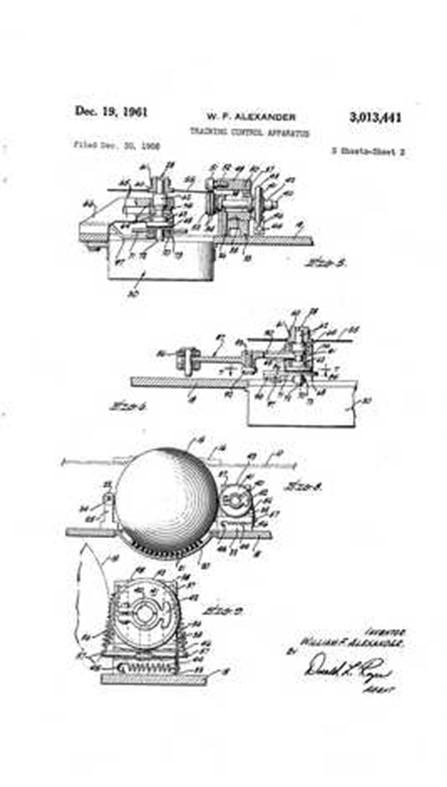

Also on that note, they anticipated further possible use of this device (now known as the mouse), as described in the quote, ‘While the
control mechanism hereof has been described in connection with radar systems and devices and the positioning of an indication on the face of a cathode ray tube, it is to be understood that the present mechanism may be employed with other structures wherein integrated control is desired’.
Another ‘roller ball’ (now known as the trackball) was built by Kenyon Taylor, a British electrical engineer working with Tom Cranston and Fred Longstaff. Taylor was part of the Ferranti Canada, working on the Royal Canadian Navy’s Digital Automated Tracking and Resolving (DATAR) system in 1952. DATAR’s concept was very similar to Benjamin’s display device.
The trackball used four disks, two for X and Y directions. Several rollers gave mechanical support, and when the ball was rolled the pickup disks spun and contacts on the outer rim made contact with wires, recording pulses of output
with movement. By counting the pulses on X and Y axis, the system could determine where to move the desired output of your choosing.
The ‘bug’ or ‘mouse’
Douglas Engelbart (D.E) of Stanford Research Institute (now known as SRI International) has been credited as the inventor of the computer mouse, initially known as ‘the bug’.
By 1963, Engelbart successfully established a research lab at SRI, known as the Augmentation Research Center (ARC), to pursue his objective of making both hardware and software technology to ‘augment’ human intelligence.
In November 1963, while at conference on computer graphics in Reno, Nevada, Engelbart got a new idea for inputting X and Y coordinate data and, on 14th November, he skeched a device in
his notebook called a ‘bug’, which is a ‘3-point’ form that would be easier and ‘more natural’ to use and, unlike a stylus, would stay still when let go, meaning it would be easier to use with a keyboard or, in his words, ‘much better coordination with the keyboard’.
In 1964, Bill English joined ARC, where he and Engelbart built the first ‘bug’ (mouse) prototype. They named the device the ‘mouse,’ as the early models had a cord attached to the rear part of the device, which resmbled the tail of a real-life mouse. According to Roger Bates (a hardware designer under English), another reason for choosing this name is the cursor on the screen was referred to the ‘CAT’ at the time.
On 9th December 1968, Engelbart publicly demonstrated the mouse at what would be known later as
‘The Mother of All Demos’. He never received royalties for this as his employer at SRI held the patent, which expired before the mouse became widely used among personal computers. In any event, the invention of the mouse was a small part of Engelbart’s much larger project of ‘augmenting human intelligence’.
Several other experiments tried to replicate the success of the mouse with other body parts but were eventually abandoned because of the speed and convenience of the mouse. The Xerox Alto was the first mouse designed for personal computer use in 1973 and it is regarded as the first modern computer to use a mouse.
If you want all the nitty-gritty details, go to https://en.wikipedia. org/wiki/Computer_mouse.
Sources:
https://en.wikipedia.org/wiki/ Computer_mouse
https://forum.trackballs.eu/ viewtopic.php?t=96
https://www.google.com
https://www.sri.com/hoi/ computer-mouse-and-interactivecomputing/
https://history-computer.com/ computer-mouse-completehistory/
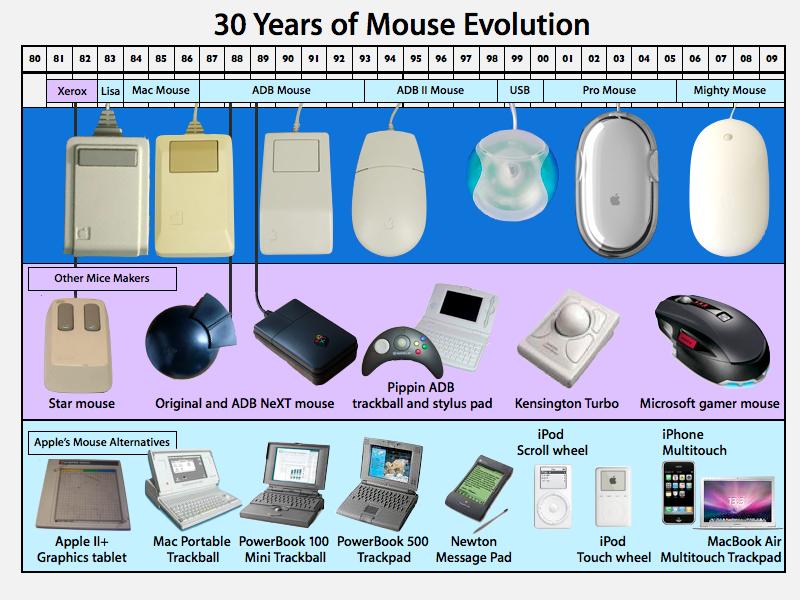
https://www.scientificamerican. com/article/origins-computermouse/
https://www.back2.co.uk/blog/ history-of-the-computer-mouse/
The History of MIDI
Daniel W, Year 10 writes...
The state of the electronic instrument industry in the 1980s was fractured. It was split between multiple companies with their own proprietary products that couldn’t synchronize together. For customers, they were forced to decide between companies with their proprietary systems and the intimidating complexity of interfaces from the period, which would be difficult to understand.
This was unsatisfactory for Ikutaro Kakehashi, the president of Roland, and, in his eyes, this issue was an obstacle for the growth of the electronic music industry. His solution was to develop a base universal standard for all manufacturers, no matter what instrument and from what company. It it was a part of the standard, you could communicate with it.
This concept was proposed to Tom Oberheim of Oberheim Electronics in response to, what he felt was, the cumbersome

Oberheim system, which was the company’s proprietary system at the June 1981 NAMM show. Kakehashi was recommended by Tom to contact Sequential Circuit’s president, Dave Smith, which began the development of the concept with talks of accessibility, affordability and universal specifications in mind.
For the universal standard to work, input and approval from the biggest instrument manufacturers was essential. Both Smith and Kakehashi began discussions with American and Japanese companies. While Smith presented the idea to some American manufacturers, Kakehashi’s status as Roland’s president afforded the interest of manufacturers like Yamaha, Korg and Kawai.
Dave Smith first proposed a Universal Synthesizer Interface (USI) at the convention of the Audio Engineering Society (AES) and it was designed with 19.2 kdps speed, as well as connections with ¼” phone jacks. This raised issues as his proposal was
discussed in a meeting between Oberheim, Sequential Circuits and the Japanese companies at the October 1981 Tokyo Gakki fair. This meeting generated multiple ideas which resulted in an agreement to meet once a month with the synthesizer interface conference to further Smith’s design.
The second synthesizer interface conference outlined the concerns surrounding USI - the 19.2kdps was too slow, the use of phone jacks caused unwanted noise in the system, and there was a lack of synchronization, clock or starting and stopping sequences. At the third synthesizer interface conference, Yamaha suggested the addition of a ground pin to solve the noise issue and Roland proposed the use of 5 PIN DIN cable for convenience on stage, while they also implemented significant features of tempo, start, stop, forward and backward messages.
There was also an alternative specification presented by some of Japanese companies that modified the binary note data of USI to 7-bit data. With this new standard, the name Universal Musical Interface (UMI) was favoured by Kakehashi, but Smith described it as “a little corny” and proposed the name we know now as the Musical Instrument Digital Interface (MIDI).
Dave Smith found the January 1982 NAMM show the perfect opportunity to meet with a number Synth manufacturers (CBS/Rhodes, E-mu, Music technology inc., Octave Plateau, Passport Designs, etc) and
propose his idea to the wider industry. However, his meeting with the American and European manufacturers only received scepticism, with disagreements arising between companies and doubt that there was any benefit to Smith’s idea. The meeting ended unsuccessfully but Kakehashi encouraged Dave Smith to continue MIDI and not give up.
After the meeting, specifications for MIDI were finalised and included an increase from 8 channels to 16 that could either play a single note at a time or multiple notes simultaneously. MIDI was publicly announced in the November 1982 Keyboard Magazine by Bob Moog, who released the first commercially available synthesizer. At the 1983 NAMM show, MIDI was demonstrated between the first MIDI compatible instruments, the Sequential Circuits 600 and Roland Jupiter 6 synthesizer.

Following this, the MIDI specifications were published in August, along with the instruments showcased, and the MIDI Manufacturers Association (MMA) was formed which grew over the next few years. The release was, by coincidence, with the release of the Macintosh and MS-DOS in 1985, which saw the adoption of music software using MIDI and made recording more accessible to consumers outside of professional’s musicians. This was valuable in the revival of the music industry in the 1980s.
The adoption of MIDI would have only been possible if it was open source between manufacturers and accessible, which is why it has been considered one of the most important contributions to music.
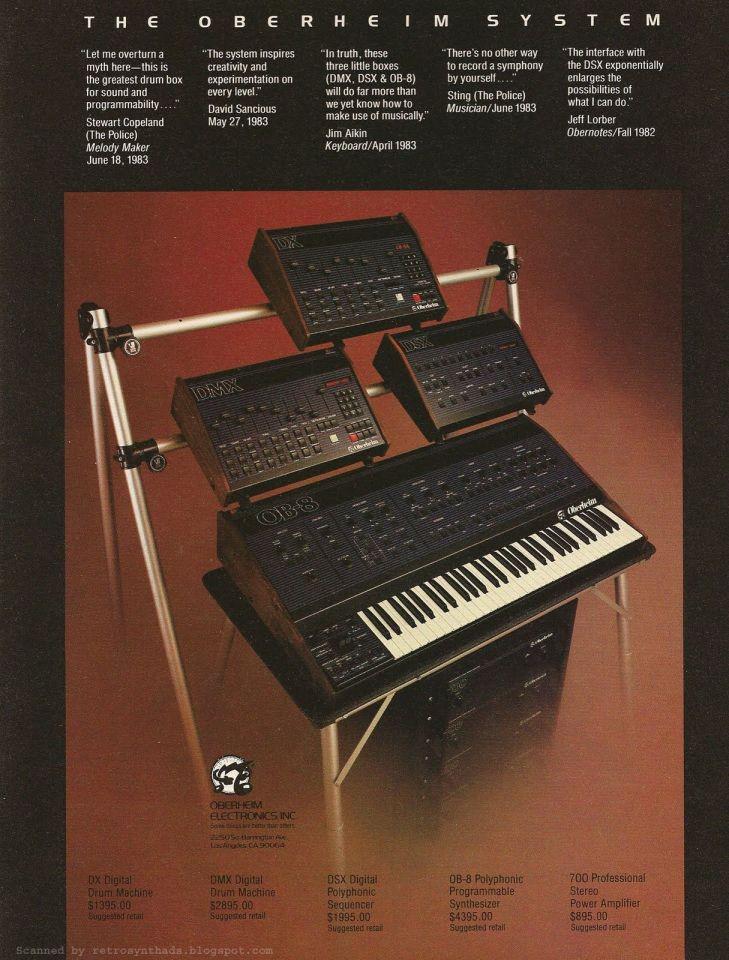
GOLF Needs a shake-UP
Edward J, Year 12 writes...
Golf needs a shake-up, but is rolling back the ball really the answer?
As is the way of sport at the highest level, a fascinating, and yet maddening, pursuit of perfection is inevitable. In golf, a key part of “chasing perfection” is placed on distance, no different from being fast in football or strong in rugby. The simple premise of “rolling back the ball” involves limiting the distance the ball can travel, thus regulating the distance that professional golfers can hit the ball.
Why is hitting the ball a long way such an advantage? The simple premise of golf is to get the ball in the hole in as few shots as possible throughout a round (which consists of 18 holes).
Each hole on the course varies in length: par 3s are generally the shortest, par 4s are normally longer, and par 5s tend to be the longest. “Par” is, typically, the number of strokes a “professional” golfer would expect to take on a hole (hence why holes with a greater par tend to be longer, as you would expect to take more shots to cover a larger distance). Take, for example, a 400-yard par 4: a 320-yard drive would leave you with only 80 yards left to the green, whilst a 275-yard drive would leave you with 125 yards left to the green. The person who is 80 yards from the green would, statistically speaking, take fewer shots to hole out than the person 125 yards from the green, resulting in better scores.
You may ask, why is this a problem? Well, many historic and storied courses, designed years ago when golfers would hail a 265yard drive as revolutionary, will be defenceless against the powerful and prodigious players of today’s game, as they continue to turn par 5s into glorified par 4s and, in rare cases, par 4s into long and difficult par 3s. As said by R&A CEO Martin Slumbers, “it’s our responsibility as governing bodies to propose change to protect the long-term integrity of our sport.” And there is a belief, although controversial, that bifurcation is the answer, whereby pros would use different equipment than amateurs.
In some people’s minds, this splitting of the game into two branches would be “detrimental to golf’s long-term well-being” (Titleist). This detachment between the amateur game and the professional game would attack the very point on which golf is based. Whilst you couldn’t emulate playing football or rugby at the highest level, due to a lack of quality teammates, anyone can play the same game as Rory McIlroy or Tiger Woods. You can buy the same clubs, the same golf balls, and even play most of the same courses. It is one of the only sports where you can almost completely compare your game to the top golfers in the world and the proposal of bifurcation is a serious challenge to this essential part of the sport. And don’t forget its effects on golf ball suppliers, who will have to seriously jeopardise their production of golf balls for the masses. The college golfers and aspiring pros will be faced with the challenge
of altering their game to adapt to the change in distance and spin of the golf ball at a significant stage of their development. And, most of all, the average Joe who will become separated further from the sport at the highest level.
The problem does not solely lie with the golf ball, but also the ease with which the pros are escaping the so-called ‘hazards’. Bunkers are no longer penal, they are straightforward and welcoming. The rough is only cataclysmic and ruinous at marquee events during the year, which are sporadic throughout the calendar. If you wish to chain the longer hitters, raise the rough and narrow the fairway the further you get down it, forcing more of a tactical and shrewd approach. A similar premise to this was used by Team Europe in the 2018 Ryder Cup at Le Golf National. They found that Team USA had a distinct advantage from 125 yards in the fairway, so placed the tee boxes accordingly so that the most danger was at the 125-yard mark, resulting in a dominant 17½10½ victory for the underdog Europeans. The point here is that you can play away from players’ strengths and, gradually, harness them.
There are many alternatives to striking a barrier between the professional and amateur side of the game. Ultimately, here lies the problem with bifurcation, we’re using a sledgehammer to crack a nut and attacking the very essence of golf in the process.
After last week’s Euros qualifying results, we now have a clearer view of things to come in next years’s Euros. On 14th June, the competition taking place in Germany will begin and end with the final exactly one month later.
Euros qualifiers
Over the last couple of months, European national teams have been playing head-to-head in order to qualify for next year’s competition. Most national teams have already played three or four of their games, and there are quite a few surprises.
Firstly, Scotland, along with Portugal and France, are the only teams to have won all the games they have played so far. Considering that Spain, who have won it three times, are in their group, this is quite impressive.
As well as this, record-breaking player Erling Haaland, who currently plays for Norway, as it stands will not be going through to next year’s competition.
Luckily for some of the third placed countries, every country that finishes just short will have the opportunity to go through via play-offs. Countries such as Greece, Norway and Ukraine will be looking to advance by doing this.

Competition next year
For the competition, many countries are in the running to go all the way and win, like France, Germany and Spain. Having reached the final of last years World Cup, and only losing on penalties to Argentina, I think France are more than capable of winning. Players such as Kylian Mbappe and Karim Benzema can lead France onto winning their third Euros. Italy are another strong force to be reckoned with, having won their last Euros, again on penalties, a couple of years ago.
In terms of top scorers for next years competition, Haaland, Harry Kane, and Lukaku all have a fair chance of winning but, in my opinion, Mbappe will finish with the golden boot because players such as Griezmann and Nkunku
are constantly looking to assist him.
In terms of top assister, I think Kevin de Bruyne and Bruno Fernandes are most likely to win. This is because we all know how good Kevin de Bruyne is for Manchester City and, with the likes of Romelu Lukaku up front, h should get plenty of assists. On the other hand, Bruno Fernandes right now, is the current top assister with five assists in only six games. Fortunately for the Portuguese midfielder, Cristiano Ronaldo looks to have picked up form in the Saudi Arabian league with Al-Nassr. For this reason, I believe that Fernandes will manage to edge out De Bruyne in the Euros 2024 top assister.
For a dark horse national team, Scotland are looking promising, having won five from five, even with the likes of Spain in their group. Looking to win their first ever Euros, their national team this year looks to have improved and seem like a team that could well make it past the group stages, and possibly round of 32 and 16.
Panos K, Year 10 writes...
EUROS 24
JOSE MOURINHO
Benji C, Year 8 writes...
Early days 1988-1999
Mourinho started his career as PE teacher for a local school, then left his job to go to Scotland and get his UEFA coaching course. After he got his UEFA coaching licence, he secured a role as a youth coach at Victoria Sebul before he got his big break.
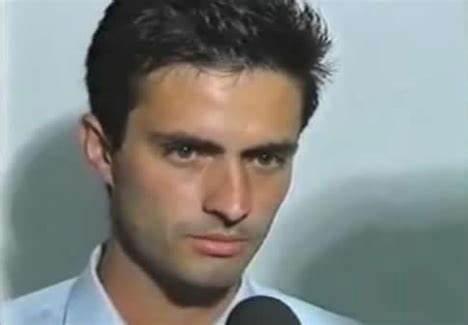
1992
“The president brought along a bright young lad called José Mourinho, who said that he was to be my interpreter,” Robson added. “A good looking guy; I told him not to stand next to me too many times! I knew he was keen and I knew, at one time, he would leave me.”
1997
It wouldn’t be until 1997 that the pair separated They won two Primera Division titles, a Portuguese Cup, the Portuguese and Spanish Super Cups, the Copa Del Rey and the UEFA Cup Winners’ Cup, all before Robson’s Ten At the Nou Camp. Mourinho was an important influence
between the coaching staff and the players - befriending a certain Pep Guardiola, then a key midfielder for the club, along the way.
2000
Following three more highly successful seasons as assistant to Robson’s successor in Barcelona, Louis van Gaal, Mourinho moved to Benfica to work under another legendary coach in the form of German Jupp Heynckes.
Their partnership didn’t last long and Mourinho took over the reins four games into the season, stepping into the first senior management role of his career.
Despite five wins, three draws and just two defeats in ten games at the helm, Mourinho was caught up in the politics of presidential elections and left shortly after a statement 3-0 victory over rivals Sporting - just two and a half months into the role.
2002
Mourinho was soon back in gainful employment with Uniao de Leiria, and took the side to
fourth after 19 games of the 2001-02 campaign. That caught the attention of Porto, who soon appointed Mourinho in what was the start of an incredible stint at the club, where they collected six trophies in Mourinho’s two-anda-half years with the Dragons. That included back-to-back league crowns in 2002-03 and 2003-04, as well as Portuguese Cup and UEFA Cup titles in his first full season.
When Porto went on and won the Champions League at the end of that season, with an emphatic 3-0 win over AS Monaco in the final, Mourinho’s reputation as the most exciting coach in world football was firmly rubber-stamped.
2004
Following demand for the signature of the star of European coaching, Chelsea won the race and London became Mourinho’s next stop. His impression would be immediate, with his debut in front of the cameras resulting in Mourinho saying these now famous words, “I’m not one out of the bottle. I think I am a special one.” The Special One was born.
2005
Mourinho’s impact in west London was just as instant as the club hoped it would be, as Chelsea lifted the Premier League trophy for the first time in their history at the end of his first campaign. Community Shield, League Cup and FA Cup glory would all follow, as would a successive league win in 2004-05.
2007
Chelsea and Mourinho parted ways in 2007 and, as Inter, came calling Jose Mourinho answere
2010
By 2010 Mourinho had won backto-back league titles and secured another Champions League trophy, defeating his old friend Pep Guardiola’s Barcelona. At the end of the season Mourinho left for real Madrid
2012
Two year at the Bernabau secured a fourth league win in a fourth different country, as well as both the Copa del Rey and Spanish Super Cup trophies.
The 2012-13 campaign would end in disappointment, however, with Mourinho describing it as “the worst season of my career” as Barca pipped Real. They dropped out of the Champions League in the semi-finals and rivals Atletico Madrid beat them in the final of the Copa del Rey.
It would prove the end of Mourinho’s stay in the Spanish capital.
2013
Yet Mourinho was soon back in London and among familiar faces at Chelsea. One of those was Frank Lampard who recently said of his former coach: “He’s the most loyal, the most caring manager I’ve ever worked with. I might be biased, because I love the man, but he does it instantly. He brings instant success.”
2016
After some flirting down the years, a stint in charge of Manchester United finally began in 2016, with Mourinho replacing his old mentor Van Gaal at Old Trafford. “To become Manchester United manager is a special honour in the game,” said Mourinho. “It is a club known and admired throughout the world.”
After 18 months, Mourinho had won another Community Shield, a League Cup and the Europa League - taking his tally to 25

trophies during his coaching career so far.
2021
Having left United in 2018, Mourinho somewhat surprisingly signed on as coach of Tottenham Hotspur a year later. When time was called on Mourinho’s spell at Spurs, Roma moved quickly to secure the services of one of the most decorated coaches in the game’s history.
“After meetings with the ownership and Tiago Pinto, I immediately understood the full extent of their ambitions for AS Roma,” said Mourinho. “It is the same ambition and drive that has always motivated me and together we want to build a winning project over the upcoming years.
“The incredible passion of the Roma fans convinced me to accept the job and I cannot wait to start next season.”
WRITE FOR US
Do you have something you’d like to write about?
Is there a passion or interest you’d like to share with others?
Is there a cause you would like to draw attention to?
Would you like to report on school events?
Are you a great photographer or artist?
Send your articles (and images to go with them) to nicola.bradley@wetherbysenior.co.uk, or ask to be added to the team on Teams where you can submit it directly.
A submission deadline will be set each half term, so get writing so your article can be included!










































